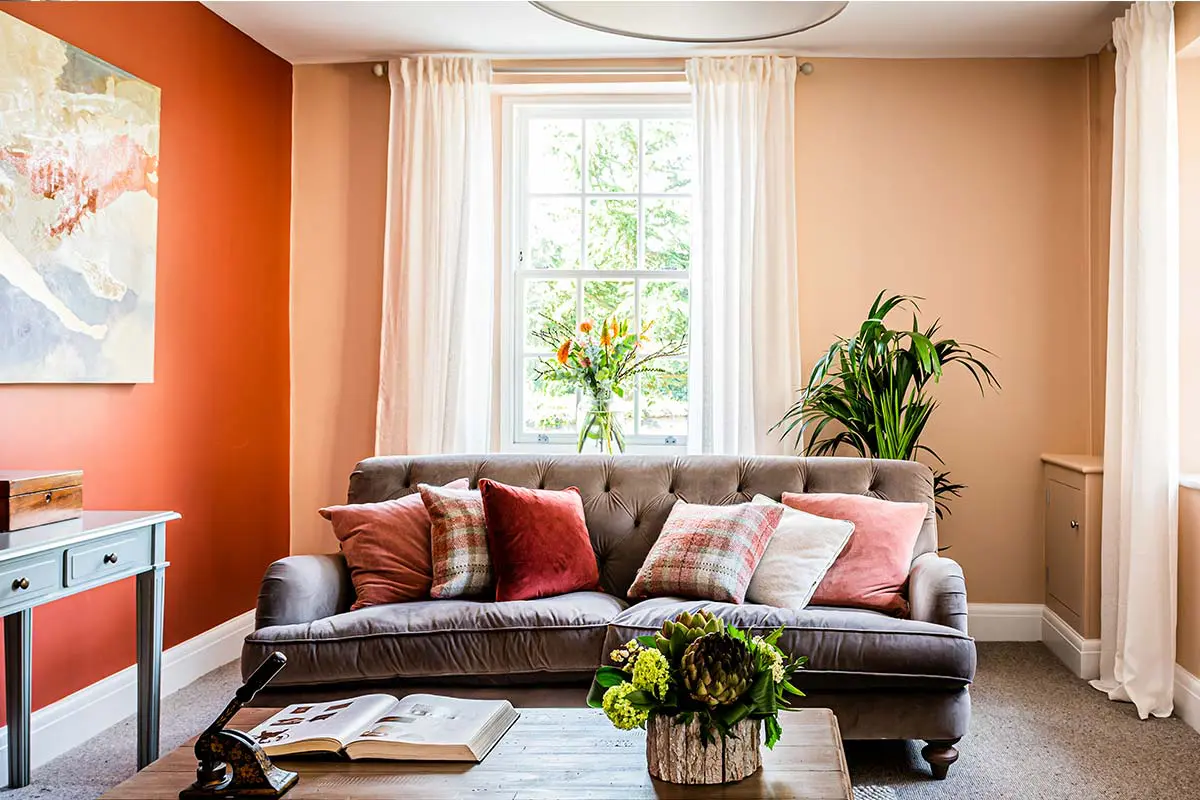Specifying Timber Windows in Conservation Areas
September 29, 2025 | News | Written by bereco-admin
Working on conservation properties requires careful attention to heritage requirements while meeting modern building standards.
For trade installers, choosing the right conservation timber windows can make the difference between planning approval and costly rejections. This guide covers everything you need to know about specifying timber windows for conservation areas and listed buildings.
What restrictions apply in conservation areas?
Conservation areas protect the character and appearance of special architectural or historic interest locations. These designations bring specific planning controls that affect window replacement and installation.
Local planning authorities typically require planning permission for alterations visible from public areas, along with materials and designs that preserve the area’s character. You’ll need to consult with conservation officers before work begins and ensure compliance with Article 4 Directions where applicable.
Article 4 Directions remove permitted development rights, meaning even minor alterations need planning permission. These are common in sensitive conservation areas, and means new windows must respect the historic character whilst meeting current building regulations.
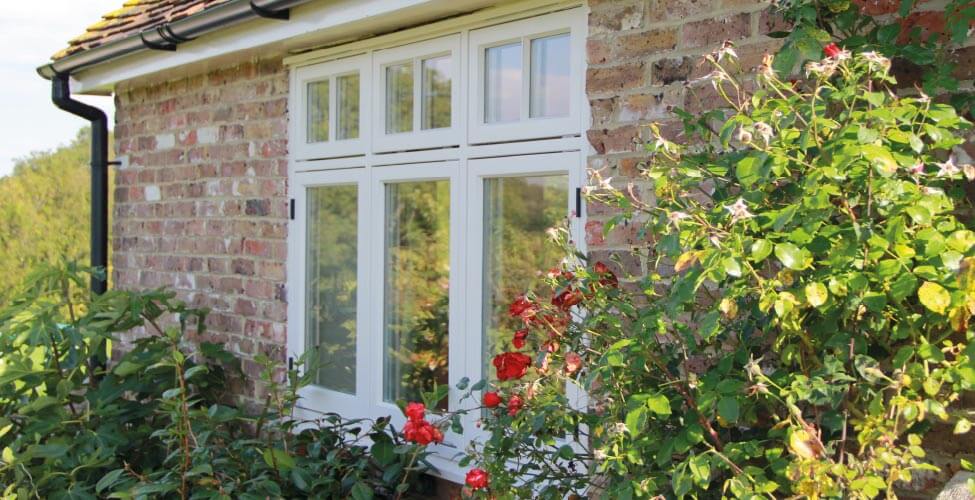
Conservation areas vs listed buildings: different requirements?
While both designations protect heritage assets, their requirements differ.
Conservation areas focus on preserving overall character and appearance rather than specific architectural details. This can allow slightly more flexibility in materials and design choices, though planning permission is still required for most external alterations. The emphasis is on considering the impact on the streetscape and surrounding buildings rather than preserving individual features.
Listed buildings operate under stricter controls, requiring Listed Building Consent for any alterations. Grade I and II* buildings have the most stringent controls, with requirements for authentic materials and traditional construction methods. The focus is on preserving specific architectural and historic features that contribute to the building’s special interest.
Conservation areas generally offer more flexibility than listed buildings, though properties can be both listed and within a conservation area, requiring compliance with both sets of regulations.
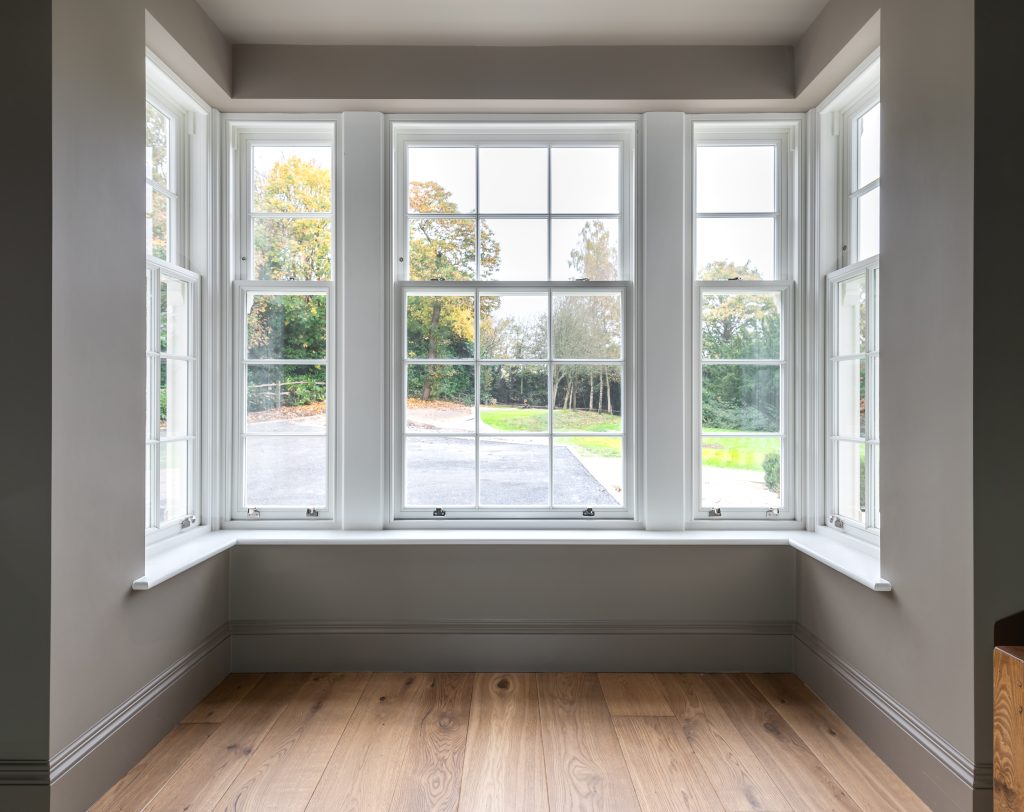
What windows are permitted in conservation areas?
Conservation officers typically approve windows that maintain traditional aesthetics whilst delivering modern performance. The range of acceptable options has expanded as glazing technology has improved and understanding of thermal efficiency requirements has grown.
Traditional timber windows
Box sash windows remain the preferred choice for Georgian and Victorian properties throughout the UK. These sliding sash windows maintain authentic proportions with traditional glazing bar patterns and solid glazing bars for authentic appearance. The construction methods respect historical accuracy whilst incorporating modern weatherproofing and performance standards.
Flush casement windows suit properties from various periods, offering clean lines that complement conservation properties. These windows deliver excellent energy efficiency with modern double glazing while maintaining traditional design principles that satisfy conservation requirements.
Glazing considerations
Single glazing may still be required in highly sensitive locations to maintain complete authenticity, particularly for Grade I listed buildings within conservation areas. However, many conservation areas now accept slim double glazing units that replicate single glazing appearance, secondary glazing systems for additional thermal efficiency, and modern glazing with glazing bar configurations.
Double glazing increasingly receives approval when the overall glazing unit thickness remains appropriate for the building’s period, glazing bars maintain traditional proportions, and the visual impact matches original glass appearance. Conservation officers focus on visual impact rather than glazing type alone, meaning well-designed double glazing often receives approval when it preserves traditional aesthetics.
Bereco’s range of conservation timber windows
Bereco specialises in conservation timber windows that satisfy heritage requirements whilst delivering modern performance standards. Our range addresses the specific needs of conservation properties across different architectural periods.
Sliding sash windows
Our sliding sash windows combine traditional construction methods with modern weatherproofing systems, and are available with either spiral balance, or traditional cords and weights operation. Each window features timber only parting beads, baton rods and sash horns for an authentic appearance, alongside custom glazing bar patterns that can be designed to match existing windows.
The double glazing achieves U-values from 1.3 W/m²K whilst maintaining the visual characteristics that conservation officers require.
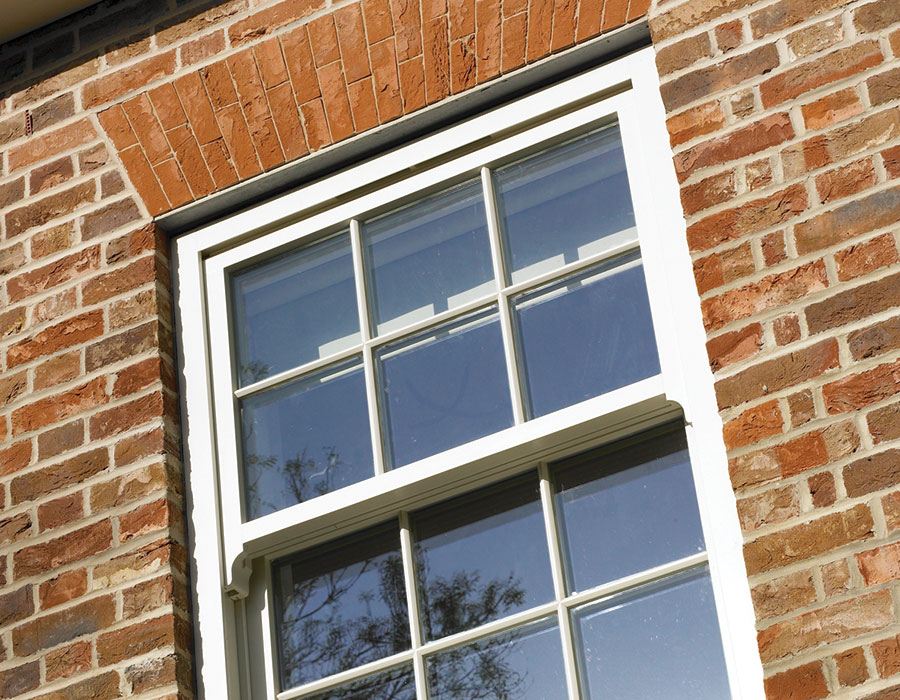
Flush casement windows
Flush casement windows feature clean lines and a period-appropriate flush profile. Their elegant styling makes them an ideal fit for many conservation properties, from stone cottages to Victorian townhouses, where authenticity and architectural harmony are paramount.
Traditional ironmongery is available in 10 metal finishes to complement the property’s character, while excellent energy efficiency exceeds current building regulations.
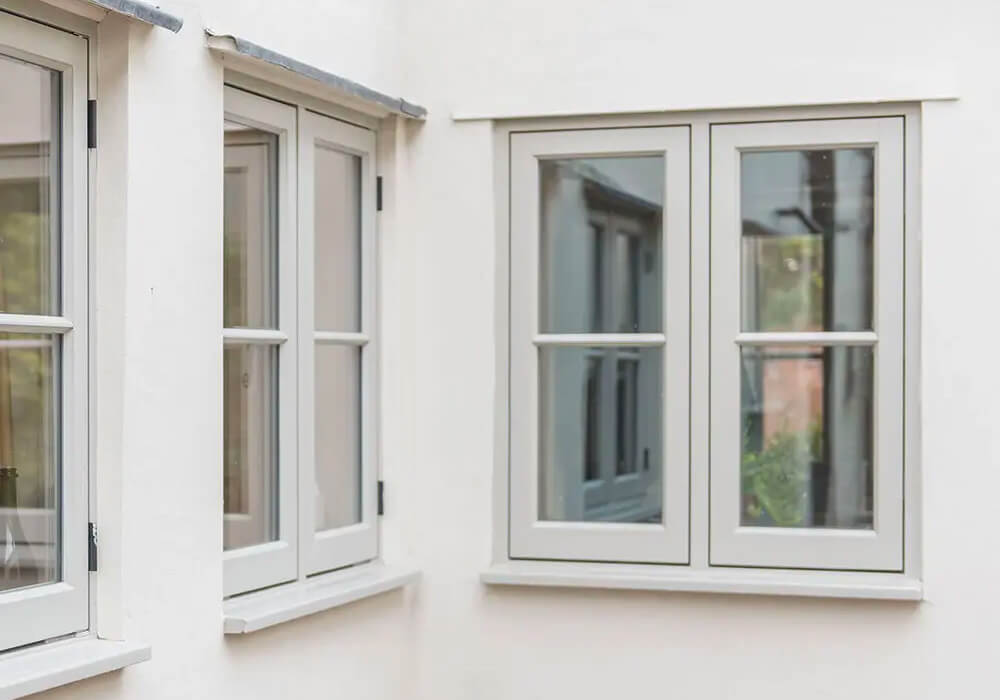
Lipped casement windows
Lipped casement windows feature a slightly protruding sash that overlaps the frame. While they are not traditionally associated with heritage architecture, lipped casements can still be considered for conservation areas in certain circumstances, particularly where the original windows have already been replaced.
These windows incorporate traditional construction details with enhanced weather performance suitable for the demanding UK climate.
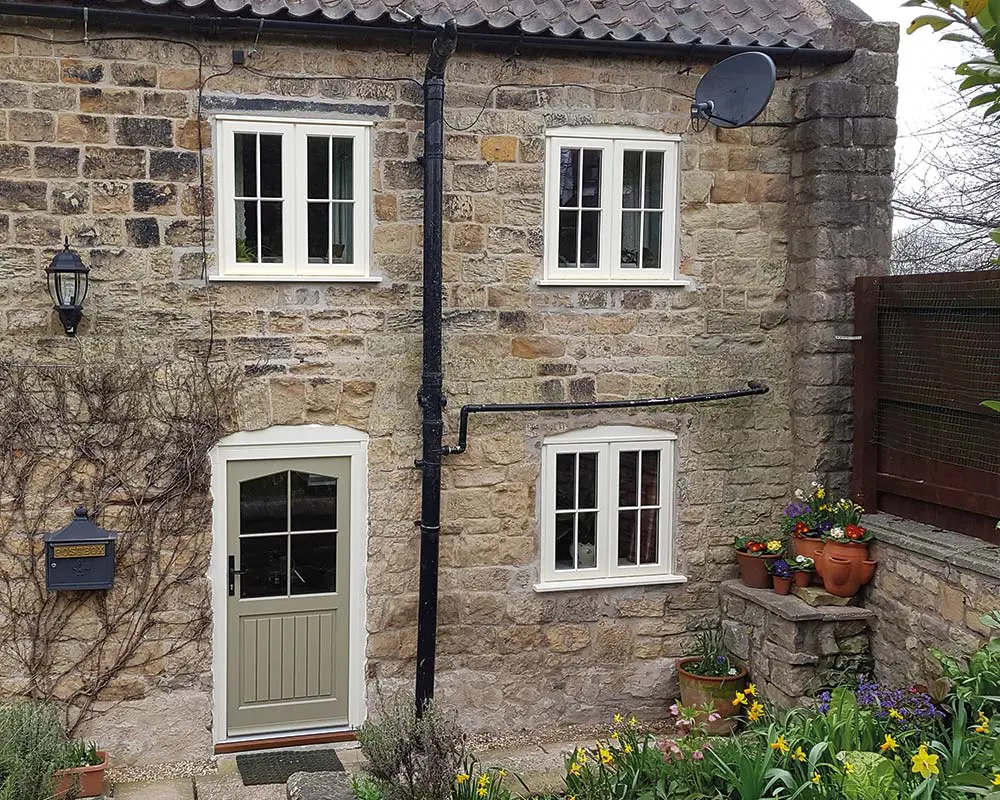
Customisation options
All Bereco conservation timber windows feature FSC® & PEFC certified sustainable timber sourcing and thousands of paint finishes. They are bespoke manufactured to order, meaning that a wide range of features can be customised to match existing windows, including bespoke glazing bar designs can replicate original patterns. Traditional ironmongery styles and single or dual colour finishes provide complete design flexibility.
Key considerations when choosing conservation timber windows
Planning and compliance
Research local requirements thoroughly before specifying any conservation timber windows. Check for Article 4 Directions affecting the property and review local planning authority guidance documents, which often provide specific requirements for different types of conservation areas. Consulting conservation officers during the design phase prevents costly revisions and ensures compliance with both heritage and building regulations.
Understanding specific requirements for each conservation area is crucial, as these can vary significantly between different local authorities and even between different conservation areas within the same authority.
Design authenticity
Matching traditional proportions requires careful attention to design details that respect the building’s period and architectural style. Glazing bar patterns should reflect the appropriate historical era, while frame profiles must be sensitively chosen to complement existing openings, even if exact dimensions differ from the originals. Ironmongery styles should echo the building’s age and character, helping maintain visual authenticity without relying on modern design trends.
Performance standards
Balancing heritage requirements with modern standards means achieving thermal efficiency that meets current building regulations while satisfying conservation requirements.
Durability expectations from homeowners and developers must be met alongside low maintenance requirements for long-term performance. Weather resistance suitable for UK climate conditions is essential for both historic buildings and new buildings in conservation areas.
Material quality
Specifying durable, sustainable materials ensures long-term success for conservation projects. Our FSC®100% and 100% PEFC certified timber demonstrates environmental responsibility, while factory-applied finishes provide consistent quality that meets conservation standards.
Robust construction designed for a 60+ year lifespan reduces lifecycle costs, while comprehensive warranty coverage provides peace of mind for all stakeholders.
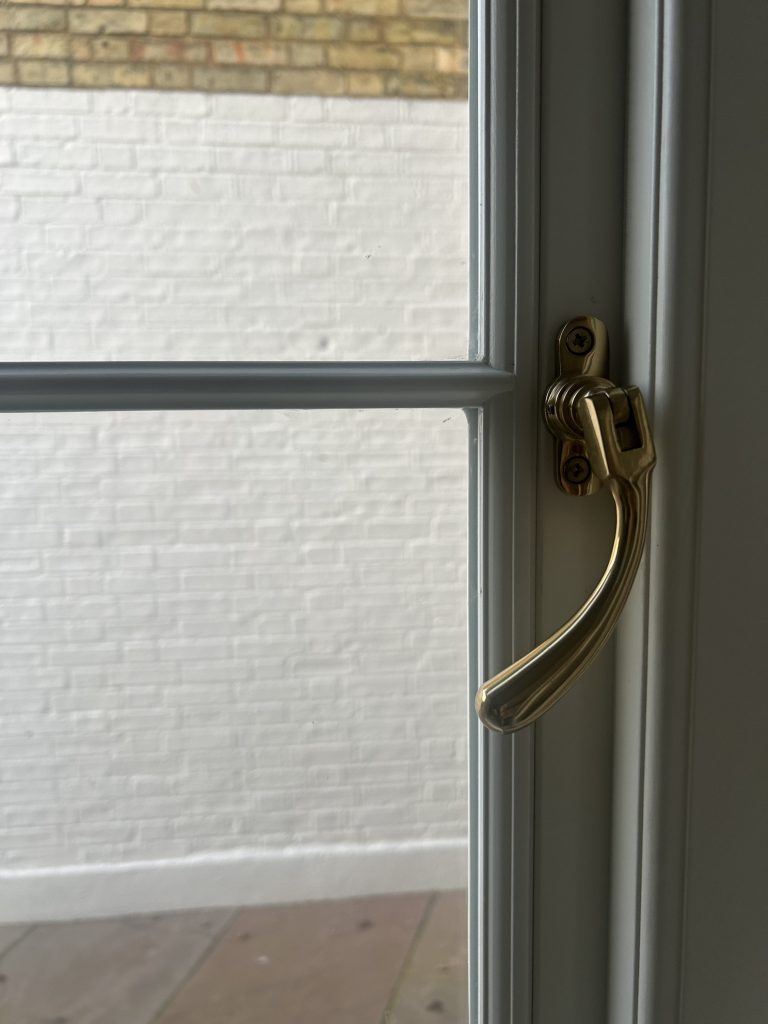
Modern performance in traditional design
Today’s conservation timber windows deliver excellent energy efficiency without compromising authenticity. Bereco’s slimline double glazing achieves U-values that meet the requirements stipulated in 2023 Part L building regulations, whilst maintaining traditional aesthetics that satisfy the most demanding conservation requirements.
Key performance benefits include thermal efficiency with U-values from 1.3 W/m²K using double glazing, sound reduction up to 42dB with acoustic glazing options for properties near busy roads or airports, and Secured by Design approval with multipoint locking systems. Weather resistance meets third-party tested performance standards essential for UK conditions.
This modern performance suits both historic buildings requiring replacement windows and new buildings in conservation areas needing traditional design that doesn’t compromise on contemporary living standards.
Why choose Bereco for conservation projects?
With over 20 years specialising in bespoke timber windows, Bereco understands the complexities of conservation requirements across different architectural periods and local authority approaches. Our team provides technical support through planning applications, detailed CAD drawings for planning submissions, and specification guidance for heritage compliance. We regularly collaborate with conservation officers to ensure successful outcomes for sensitive projects.
From specification to installation, Bereco provides complete support for conservation projects. We offer free detailed quotations with itemised pricing, technical drawings and product specifications suitable for planning applications, and delivery throughout mainland Great Britain. Our customer care support continues through to occupancy, ensuring long-term satisfaction.
Discuss your conservation project with our expert team: contact Bereco
Specifying conservation timber windows requires expertise in both heritage requirements and modern building standards. Bereco’s experienced team guides you through the entire process, from initial specification to final installation, ensuring compliance with conservation requirements while delivering exceptional performance.
Whether you’re working on listed buildings, properties in conservation areas, or new developments requiring traditional aesthetics, we provide the expertise and products to ensure successful outcomes that satisfy conservation officers, building control, and end users.
Get your free trade quote today. Complete our online contact form, call our trade team on 01709 838188 or email your project details to info@bereco.co.uk .



